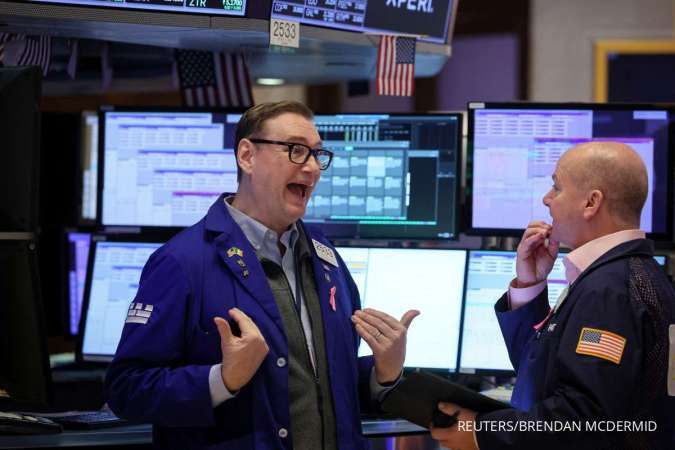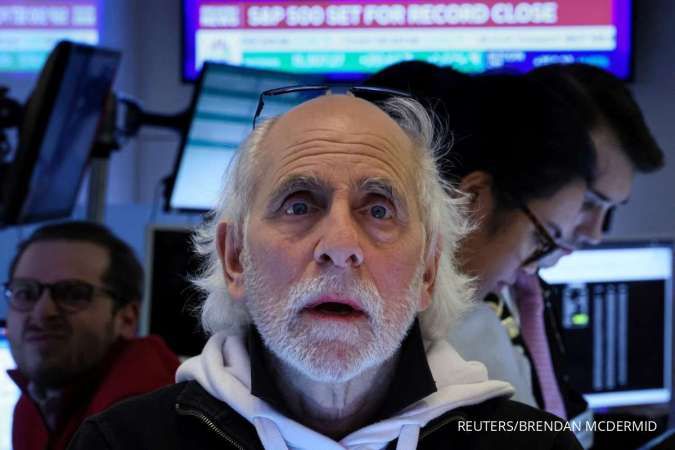WALL STREET - March 8 (Reuters) - The S&P 500 and Nasdaq closed lower on Friday after touching record highs during the session, with high-flying chip stocks going into reverse and a mixed labor market report that showed more new jobs than expected with a rising unemployment rate.
The S&P and Nasdaq briefly hit intraday record highs but started to lose steam late morning. The Philadelphia Semiconductor Index .SOX sharply underperformed and ended the day down 4% after touching an intraday record high.
Artificial intelligence chip darling Nvidia NVDA.Oclosed down 5.6% to snap a six-session winning streak. Early in the session it had been up more than 5%.
In the chip index, BroadcomAVGO.O sank 7% after its full-year forecast failed to impress investors and Marvell TechnologyMRVL.O tumbled 11.4% after it forecast first-quarter results below market expectations on soft demand.
Read Also: Stocks at Record Highs as US Data Leaves June Fed Cut Bet Intact
Stocks had opened higher after data showed U.S. job growth accelerated in February, with nonfarm payrolls increasing by 275,000 jobs against an expected 200,000 rise. January jobs numbers were revised lower.
Also, the unemployment rate rose to 3.9% in February after holding at 3.7% for three straight months, while wage growth slowed to 0.1% on a monthly basis.
"Today is just profit taking," said Brian Price, head of investment management for Commonwealth Financial Network who described the week as "a microcosm of the year so far" with modest pull backs and buyers stepping in.
Price pointed to some signs of consumers spending more cautiously, with Costco Wholesale COST.O shares closing down 7.6% as quarterly sales fell short of estimates due to tepid demand for higher-margin goods.
But Price said "the general bias right now is for the market to continue to move higher, absent negative catalysts."
"That's really what the market is hanging its hat on right now, that inflation is going to continue to be benign, that the Fed is going to start to ease."
Next week's February data including consumer prices (CPI) and retail sales will offer more cues on the prospects for potential rate cuts.
Read Also: US Job Growth Accelerates in February; Unemployment Rate Rises to 3.9%
On Thursday, Federal Reserve Chair Jerome Powell said the central bank was "not far" from gaining the confidence inflation is falling sufficiently to begin cutting interest rates.
The Dow Jones Industrial Average .DJI fell 68.66 points, or 0.18%, to 38,722.69, the S&P 500 .SPX lost 33.67 points, or 0.65%, to 5,123.69 and the Nasdaq Composite .IXIC lost 188.26 points, or 1.16%, to 16,085.11.
The biggest loser among the S&P 500's 11 major sectors was technology .SPLRCT, which ended down 1.8%, followed by consumer staples .SPLRCS, which fell 0.8%, with a big drag from Costco.
For the week the S&P 500 lost 0.26% while Nasdaq fell 1.17% and the Dow dropped 0.93%.
"People may be taking some chips off the table. We've had a decent run. Some of the technology names had moved up quite a bit," said Charlie Ripley, Senior Investment Strategist for Allianz Investment Management.
Read Also: IDX Composite Index Strengthens 0.11% to 7,381 on Friday (8/3)
"When you've markets which have run up as much as this has since the start of the year, with returns coming in a strong as they have, these types of pull backs are healthy to see."
The biggest gainer was real estate .SPLRCR, which closed up 1.1% followed by energy .SPNY, which added 0.4%.
Also on the bright side, GapGPS.N shares finished up 8.2% after the retailer beat Wall Street expectations for fourth-quarter results, buoyed by strong demand on improved product offerings at its Old Navy and namesake brands during the holiday season, and lower markdowns.
Advancing issues outnumbered decliners by a 1.25-to-1 ratio on the NYSE where there were 708 new highs and 48 new lows.
On the Nasdaq 2,086 stocks rose and 2,192 fell as declining issues outnumbered advancers by about a 1.05-to-1 ratio.
The S&P 500 posted 65 new 52-week highs and no new lows while the Nasdaq recorded 351 new highs and 83 new lows.
On U.S. exchanges 12.29 billion shares changed hands compared with the 12.08 billion average for the last 20 sessions.
By Sinéad Carew and Bansari Mayur Kamdar
(Reporting by Sinéad Carew in New York, Bansari Mayur Kamdar and Amruta Khandekar in Bengaluru; additional reporting by Pranav Kashyap; Editing by Maju Samuel and David Gregorio)
/2024/02/06/722128306p.jpg)














